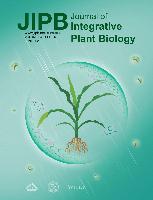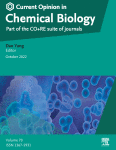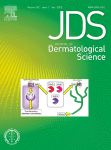Auxin is unique among plant hormones in that its function requires polarized transport across plant cells. A chemiosmotic model was proposed to explain how polar auxin transport is derived by the H+ gradient across the plasma membrane (PM) established by PM H+-adenosine triphosphatases (ATPases). However, a classical genetic approach by mutations in PM H+-ATPase members did not result in the ablation of polar auxin distribution, possibly due to functional redundancy in this gene family. To confirm the crucial role of PM H+-ATPases in the polar auxin transport model, we employed a chemical genetic approach. Through a chemical screen, we identified protonstatin-1 (PS-1), a selective small-molecule inhibitor of PM H+-ATPase activity that inhibits auxin transport. Assays with transgenic plants and yeast strains showed that the activity of PM H+-ATPases affects auxin uptake as well as acropetal and basipetal polar auxin transport. We propose that PS-1 can be used as a tool to interrogate the function of PM H+-ATPases. Our results support the chemiosmotic model in which PM H+-ATPase itself plays a fundamental role in polar auxin transport
The Diels-Alder (D-A) reaction is one of the most critical chemical transformations to construct C–C bonds with predictable regio- and stereo-selectivities. It has been widely used as a retrosynthetic disconnection in synthetic chemistry. Although significant advances have been made, synthetic challenges remain in how to precisely control the stereochemistry of intermolecular Diels-Alder reaction. Enzymes are well known for their remarkable catalytic efficiency and selectivity compared with chemo-catalysts. Therefore, identifying and designing intermolecular Diels-Alderases that can be used in organic synthesis have received considerable attention from the synthetic community. In this review, we review all the enzymes capable of catalyzing formal intermolecular Diels-Alder reactions in natural product biosynthetic pathways, discuss their catalytic mechanisms in detail, and highlight their synthetic potential in the precise and efficient synthesis of enantiopure D-A products. We also discuss the different strategies that can be used to create new artificial Diels-Alderases, especially RNA-based Diels-Alderases.
Current Opinion in Chemical Biology 2022, 70, 102185
The reversible phosphorylation of substrates mediated by kinases and phosphatases affects their subcellular localization, catalytic activity, and/or interaction with other molecules. It is essential for signal transduction and the regulation of nearly all cellular processes, such as proliferation, apoptosis, metabolism, motility, and differentiation. Small molecule kinase inhibitors (SMKIs) have served as critical chemical probes to reveal the biological functions and mechanisms of kinases and their potential as therapeutic targets. In this review, we focused on a few novel SMKIs and their recent application in biological and preclinical studies to showcase how highly selective and potent SMKIs can be developed and utilized to propel the investigations on kinases and the biology behind.
Yange Niu, Wenhao Cui, Rui Liu, Sanshan Wang, Han Ke, Xiaoguang Lei, Lei Chen*
Nature Commun. 2022, 13, 6440
Sodium glucose co-transporters (SGLT) harness the electrochemical gradient of sodium to drive the uphill transport of glucose across the plasma membrane. Human SGLT1 (hSGLT1) plays a key role in sugar uptake from food and its inhibitors show promise in the treatment of several diseases. However, the inhibition mechanism for hSGLT1 remains elusive. Here, we present the cryo-EM structure of the hSGLT1-MAP17 hetero-dimeric complex in the presence of the high-affinity inhibitor LX2761. LX2761 locks the transporter in an outward-open conformation by wedging inside the substrate-binding site and the extracellular vestibule of hSGLT1. LX2761 blocks the putative water permeation pathway of hSGLT1. The structure also uncovers the conformational changes of hSGLT1 during transitions from outward-open to inward-open states.
Background TNF-α elicits a cascade amplification effect in psoriasis. Macromolecule drugs targeting TNF-α are widely used for the clinical treatment of psoriasis. However, there are currently no effective small-molecule inhibitors that can be used in the clinic.
Objective Novel TNF-α inhibitor was identified via high-throughput screening (HTS) and its anti-inflammatory activity was evaluated.
Methods Two cell death models were established to identify inhibitors of TNF-α through HTS from a library of 3256 compounds. The effect of the inhibitor of TNF-α was tested by HaCaT cells in vitro and IMQ-induced psoriasis-like mouse model in vivo.
Results Tiamulin fumarate (TF) was identified as an effective inhibitor of TNF-α. TF significantly blocked the NF-κB and MAPK signaling pathways in TNF-α-stimulated HaCaT cells. Additionally, systemic and topical administration of TF improved IMQ-induced psoriasis-like dermatitis in the mouse model.
Conclusion Our study established a HTS method to identify TF as an inhibitor of TNF-α. The protective roles of TF in psoriasis-related inflammation reveal the potential therapeutic value of TF for psoriasis.
Enzymatic cascade reactions are powerful technologies to develop environmentally friendly and cost-effective synthetic processes to manufacture natural products and other valuable molecules. The application of Single-Enzyme-Catalyzed Cascade reactions (SECC) greatly improves the efficiency of synthesis. This digest focuses on the recent inspiring examples of the application of cascade reactions catalyzed by a single enzyme in synthesizing natural products and natural product-like molecules, with particular emphasis on the unique advantages of these strategies.
Mengyue Deng, Yue Li, Yulu Li, Xiaolan Mao, Han Ke , Weiling Liang , Xiaoguang Lei, Yu-Lung Lau, Huawei Mao*
Front. Immunol. 2022,13, 866638
Signal transducer and activator of transcription 3 (STAT3) gain-of-function (GOF) mutations cause early-onset immune dysregulation syndrome, characterized by multi-organ autoimmunity and lymphoproliferation. Of them, interstitial lung disease (ILD) usually develops after the involvement of other organs, and the onset time is childhood and beyond rather than infancy. Here, we reported a patient who presented with fatal infancy-onset ILD, finally succumbing to death. Next-generation sequencing identified a novel heterozygous mutation in STAT3 (c.989C>G, p.P330R). Functional experiments revealed it was a gain-of-function mutation. Upon interleukin 6 stimulation, this mutation caused a much higher activation of STAT3 than the wild-type control. In addition, the mutation also activated STAT3 under the steady state. The T helper 17 cell level in the patient was significantly higher than that in normal controls, which may contribute to the autoimmune pathology caused by the STAT3P330R mutation. Apart from Janus kinase (JAK) inhibitors, we also provided experimental evidence of a STAT3 selective inhibitor (Stattic) effectively suppressing the activation of mutant STAT3 in vitro. Collectively, our study expanded the clinical spectrum of STAT3 GOF syndrome. STAT3 GOF mutation appears as a new etiology of ILD and should be considered in patients with early-onset ILDs. In addition to JAK inhibitors, the specific STAT3 inhibitor would be an appealing option for the targeted treatment.
We previously identified protonstatin-1 (PS-1) as a selective inhibitor of plasma membrane H+-ATPase (PM H+-ATPase) activity and used it as a tool to validate the chemiosmotic model for polar auxin transport. Here, to obtain compounds with higher affinity than PS-1 for PM H+-ATPase, we synthesized 34 PS-1 analogs and examined their ability to inhibit PM H+-ATPase activity. The 34 analogs showed varying inhibitory effects on the activity of this enzyme. The strongest effect was observed for the small molecule PS-2, which was approximately five times stronger than PS-1. Compared to PS-1, PS-2 was also a stronger inhibitor of auxin uptake as well as acropetal and basipetal polar auxin transport in Arabidopsis thaliana seedlings. Because PS-2 is a more potent inhibitor of PM H+-ATPase than PS-1, we believe that this compound could be used as a tool to study the functions of this key plant enzyme.
Qihang Zhong, Honglei Chu, Guopeng Wang, Cheng Zhang, Rong Li, Fusheng Guo, Xinlu Meng, Xiaoguang Lei, Youli Zhou, Ruobing Ren, Lin Tao, Ningning Li, Ning Gao, Yuan Wei*, Jie Qiao*, Jing Hang*
Cell Discovery, 2022, 8, 137
Originally discovered in the circulation of pregnant women as a protein secreted by placental trophoblasts, the metalloprotease pregnancy-associated plasma protein A (PAPP-A) is also widely expressed by many other tissues. It cleaves insulin-like growth factor-binding proteins (IGFBPs) to increase the bioavailability of IGFs and plays essential roles in multiple growth-promoting processes. While the vast majority of the circulatory PAPP-A in pregnancy is proteolytically inactive due to covalent inhibition by proform of eosinophil major basic protein (proMBP), the activity of PAPP-A can also be covalently inhibited by another less characterized modulator, stanniocalcin-2 (STC2). However, the structural basis of PAPP-A proteolysis and the mechanistic differences between these two modulators are poorly understood. Here we present two cryo-EM structures of endogenous purified PAPP-A in complex with either proMBP or STC2. Both modulators form 2:2 heterotetramer with PAPP-A and establish extensive interactions with multiple domains of PAPP-A that are distal to the catalytic cleft. This exosite-binding property results in a steric hindrance to prevent the binding and cleavage of IGFBPs, while the IGFBP linker region-derived peptides harboring the cleavage sites are no longer sensitive to the modulator treatment. Functional investigation into proMBP-mediated PAPP-A regulation in selective intrauterine growth restriction (sIUGR) pregnancy elucidates that PAPP-A and proMBP collaboratively regulate extravillous trophoblast invasion and the consequent fetal growth. Collectively, our work reveals a novel covalent exosite-competitive inhibition mechanism of PAPP-A and its regulatory effect on placental function.
Nine new highly oxygenated meroterpenoids, peniciacetals A- I (1–9), along with five known analogues (10–14) were isolated from the mangrove-derived fungus Penicillium sp. HLLG-122 based on the guidance of molecular networking and OSMAC approach. Peniciacetals A- B (1–2) were characterized with a unique 6/6/6/6/5 pentacyclic system possessing an unusual 4,6-dimethyl-2,5-dioxohexahydro-6-carboxy-4H-furo[2,3-b]pyran moiety. Peniciacetals C- D (3–4) possessed an uncommon 3,6-dimethyldihydro-4H-furo[2,3-b]pyran-2,5-dione unit with 6/6/6/5/6 fused pentacyclic skeleton. The structures and absolute configurations of new compounds were elucidated by HR-ESI-MS, 1D and 2D NMR spectroscopic data, X-ray diffraction analysis, and quantum chemical electronic circular dichroism (ECD) calculation. The plausible biosynthetic pathway of 1–9 were also proposed. Compound 14 showed good cytotoxicity against HepG2, MCF-7, HL-60, A549, HCT116 and H929 cell with IC50 values of 6.6, 14.8, 3.2, 5.7, 6.9 and 3.0 μM, respectively. Further research showed that the compound 14 induced necrosis or late apoptosis contributes to the HL-60 cells toxicity.
-

-

-

-
-

-

-
-
-
-
Testing the polar auxin transport model with a selective plasma membrane H + -ATPase inhibitor
Yongqing Yang*, Xiaohui Liu, Wei Guo, Wei Liu, Wei Shao, Jun Zhao, Junhong Li, Qing Dong, Liang Ma, Qun He, Yingzhang Li, Jianyong Han, Xiaoguang Lei*
J. Integr. Plant Biol. 2022, 64, 1229-1245
Auxin is unique among plant hormones in that its function requires polarized transport across plant cells. A chemiosmotic model was proposed to explain how polar auxin transport is derived by the H+ gradient across the plasma membrane (PM) established by PM H+-adenosine triphosphatases (ATPases). However, a classical genetic approach by mutations in PM H+-ATPase members did not result in the ablation of polar auxin distribution, possibly due to functional redundancy in this gene family. To confirm the crucial role of PM H+-ATPases in the polar auxin transport model, we employed a chemical genetic approach. Through a chemical screen, we identified protonstatin-1 (PS-1), a selective small-molecule inhibitor of PM H+-ATPase activity that inhibits auxin transport. Assays with transgenic plants and yeast strains showed that the activity of PM H+-ATPases affects auxin uptake as well as acropetal and basipetal polar auxin transport. We propose that PS-1 can be used as a tool to interrogate the function of PM H+-ATPases. Our results support the chemiosmotic model in which PM H+-ATPase itself plays a fundamental role in polar auxin transport
Enzymatic intermolecular Diels-Alder reactions in synthesis: From nature to design
Lei Gao, Jun Yang, Xiaoguang Lei*
Tetrahedron Chem 2022, 2, 100013
The Diels-Alder (D-A) reaction is one of the most critical chemical transformations to construct C–C bonds with predictable regio- and stereo-selectivities. It has been widely used as a retrosynthetic disconnection in synthetic chemistry. Although significant advances have been made, synthetic challenges remain in how to precisely control the stereochemistry of intermolecular Diels-Alder reaction. Enzymes are well known for their remarkable catalytic efficiency and selectivity compared with chemo-catalysts. Therefore, identifying and designing intermolecular Diels-Alderases that can be used in organic synthesis have received considerable attention from the synthetic community. In this review, we review all the enzymes capable of catalyzing formal intermolecular Diels-Alder reactions in natural product biosynthetic pathways, discuss their catalytic mechanisms in detail, and highlight their synthetic potential in the precise and efficient synthesis of enantiopure D-A products. We also discuss the different strategies that can be used to create new artificial Diels-Alderases, especially RNA-based Diels-Alderases.
Perturbation of biological processes with small molecule kinase inhibitors
Wenyang Li, Jue Wang, Ruqi Liang, Xiaoguang Lei*
Current Opinion in Chemical Biology 2022, 70, 102185
The reversible phosphorylation of substrates mediated by kinases and phosphatases affects their subcellular localization, catalytic activity, and/or interaction with other molecules. It is essential for signal transduction and the regulation of nearly all cellular processes, such as proliferation, apoptosis, metabolism, motility, and differentiation. Small molecule kinase inhibitors (SMKIs) have served as critical chemical probes to reveal the biological functions and mechanisms of kinases and their potential as therapeutic targets. In this review, we focused on a few novel SMKIs and their recent application in biological and preclinical studies to showcase how highly selective and potent SMKIs can be developed and utilized to propel the investigations on kinases and the biology behind.
Structural mechanism of SGLT1 inhibitors
Yange Niu, Wenhao Cui, Rui Liu, Sanshan Wang, Han Ke, Xiaoguang Lei, Lei Chen*
Nature Commun. 2022, 13, 6440
Sodium glucose co-transporters (SGLT) harness the electrochemical gradient of sodium to drive the uphill transport of glucose across the plasma membrane. Human SGLT1 (hSGLT1) plays a key role in sugar uptake from food and its inhibitors show promise in the treatment of several diseases. However, the inhibition mechanism for hSGLT1 remains elusive. Here, we present the cryo-EM structure of the hSGLT1-MAP17 hetero-dimeric complex in the presence of the high-affinity inhibitor LX2761. LX2761 locks the transporter in an outward-open conformation by wedging inside the substrate-binding site and the extracellular vestibule of hSGLT1. LX2761 blocks the putative water permeation pathway of hSGLT1. The structure also uncovers the conformational changes of hSGLT1 during transitions from outward-open to inward-open states.
Tiamulin inhibits TNF-α and alleviates psoriasis-like dermatitis
Ruiyu Xiang, Linghan Hu, Siyuan Li, Ziyu Wei, Zhongya Song, Zhiming Chen, Yihe Liu, Juan Liu, Xiaoguang Lei, Yong Yang*
J. Dermatol. Sci. 2022, 107, 32-40
Background
TNF-α elicits a cascade amplification effect in psoriasis. Macromolecule drugs targeting TNF-α are widely used for the clinical treatment of psoriasis. However, there are currently no effective small-molecule inhibitors that can be used in the clinic.
Objective
Novel TNF-α inhibitor was identified via high-throughput screening (HTS) and its anti-inflammatory activity was evaluated.
Methods
Two cell death models were established to identify inhibitors of TNF-α through HTS from a library of 3256 compounds. The effect of the inhibitor of TNF-α was tested by HaCaT cells in vitro and IMQ-induced psoriasis-like mouse model in vivo.
Results
Tiamulin fumarate (TF) was identified as an effective inhibitor of TNF-α. TF significantly blocked the NF-κB and MAPK signaling pathways in TNF-α-stimulated HaCaT cells. Additionally, systemic and topical administration of TF improved IMQ-induced psoriasis-like dermatitis in the mouse model.
Conclusion
Our study established a HTS method to identify TF as an inhibitor of TNF-α. The protective roles of TF in psoriasis-related inflammation reveal the potential therapeutic value of TF for psoriasis.
Enzymatic cascade reactions for the efficient synthesis of natural products
Dongshan Wu, Xiaoguang Lei*
Tetrahedron 2022, 127, 133099
Enzymatic cascade reactions are powerful technologies to develop environmentally friendly and cost-effective synthetic processes to manufacture natural products and other valuable molecules. The application of Single-Enzyme-Catalyzed Cascade reactions (SECC) greatly improves the efficiency of synthesis. This digest focuses on the recent inspiring examples of the application of cascade reactions catalyzed by a single enzyme in synthesizing natural products and natural product-like molecules, with particular emphasis on the unique advantages of these strategies.
A Novel STAT3 Gain-of-Function Mutation in Fatal Infancy-Onset Interstitial Lung Disease
Mengyue Deng, Yue Li, Yulu Li, Xiaolan Mao, Han Ke , Weiling Liang , Xiaoguang Lei, Yu-Lung Lau, Huawei Mao*
Front. Immunol. 2022,13, 866638
Signal transducer and activator of transcription 3 (STAT3) gain-of-function (GOF) mutations cause early-onset immune dysregulation syndrome, characterized by multi-organ autoimmunity and lymphoproliferation. Of them, interstitial lung disease (ILD) usually develops after the involvement of other organs, and the onset time is childhood and beyond rather than infancy. Here, we reported a patient who presented with fatal infancy-onset ILD, finally succumbing to death. Next-generation sequencing identified a novel heterozygous mutation in STAT3 (c.989C>G, p.P330R). Functional experiments revealed it was a gain-of-function mutation. Upon interleukin 6 stimulation, this mutation caused a much higher activation of STAT3 than the wild-type control. In addition, the mutation also activated STAT3 under the steady state. The T helper 17 cell level in the patient was significantly higher than that in normal controls, which may contribute to the autoimmune pathology caused by the STAT3P330R mutation. Apart from Janus kinase (JAK) inhibitors, we also provided experimental evidence of a STAT3 selective inhibitor (Stattic) effectively suppressing the activation of mutant STAT3 in vitro. Collectively, our study expanded the clinical spectrum of STAT3 GOF syndrome. STAT3 GOF mutation appears as a new etiology of ILD and should be considered in patients with early-onset ILDs. In addition to JAK inhibitors, the specific STAT3 inhibitor would be an appealing option for the targeted treatment.
Screening of protonstatin-1 (PS-1) analogs for improved inhibitors of plant plasma membrane H+-ATPase activity
Yongqing Yang*, Xiaohui Liu, Xin Wang, Wanjia Lv, Xiao Liu, Liang Ma, Haiqi Fu, Shu Song, Xiaoguang Lei*
Front. Plant Sci. 2022, 13, 973471
We previously identified protonstatin-1 (PS-1) as a selective inhibitor of plasma membrane H+-ATPase (PM H+-ATPase) activity and used it as a tool to validate the chemiosmotic model for polar auxin transport. Here, to obtain compounds with higher affinity than PS-1 for PM H+-ATPase, we synthesized 34 PS-1 analogs and examined their ability to inhibit PM H+-ATPase activity. The 34 analogs showed varying inhibitory effects on the activity of this enzyme. The strongest effect was observed for the small molecule PS-2, which was approximately five times stronger than PS-1. Compared to PS-1, PS-2 was also a stronger inhibitor of auxin uptake as well as acropetal and basipetal polar auxin transport in Arabidopsis thaliana seedlings. Because PS-2 is a more potent inhibitor of PM H+-ATPase than PS-1, we believe that this compound could be used as a tool to study the functions of this key plant enzyme.
Structural insights into the covalent regulation of PAPP-A activity by proMBP and STC2
Qihang Zhong, Honglei Chu, Guopeng Wang, Cheng Zhang, Rong Li, Fusheng Guo, Xinlu Meng, Xiaoguang Lei, Youli Zhou, Ruobing Ren, Lin Tao, Ningning Li, Ning Gao, Yuan Wei*, Jie Qiao*, Jing Hang*
Cell Discovery, 2022, 8, 137
Originally discovered in the circulation of pregnant women as a protein secreted by placental trophoblasts, the metalloprotease pregnancy-associated plasma protein A (PAPP-A) is also widely expressed by many other tissues. It cleaves insulin-like growth factor-binding proteins (IGFBPs) to increase the bioavailability of IGFs and plays essential roles in multiple growth-promoting processes. While the vast majority of the circulatory PAPP-A in pregnancy is proteolytically inactive due to covalent inhibition by proform of eosinophil major basic protein (proMBP), the activity of PAPP-A can also be covalently inhibited by another less characterized modulator, stanniocalcin-2 (STC2). However, the structural basis of PAPP-A proteolysis and the mechanistic differences between these two modulators are poorly understood. Here we present two cryo-EM structures of endogenous purified PAPP-A in complex with either proMBP or STC2. Both modulators form 2:2 heterotetramer with PAPP-A and establish extensive interactions with multiple domains of PAPP-A that are distal to the catalytic cleft. This exosite-binding property results in a steric hindrance to prevent the binding and cleavage of IGFBPs, while the IGFBP linker region-derived peptides harboring the cleavage sites are no longer sensitive to the modulator treatment. Functional investigation into proMBP-mediated PAPP-A regulation in selective intrauterine growth restriction (sIUGR) pregnancy elucidates that PAPP-A and proMBP collaboratively regulate extravillous trophoblast invasion and the consequent fetal growth. Collectively, our work reveals a novel covalent exosite-competitive inhibition mechanism of PAPP-A and its regulatory effect on placental function.
OSMAC strategy integrated with molecular networking discovery peniciacetals A-I, nine new meroterpenoids from the mangrove-derived fungus Penicillium sp HLLG-122
Yuyue Qin, Linhu Zou, Xiaoguang Lei, Jiewei Su, Rixiu Yang, Wanjuan Xie, Wanshan Li, Guangying Chen*
Bioorg. Chem. 2023, 130, 106271
Nine new highly oxygenated meroterpenoids, peniciacetals A- I (1–9), along with five known analogues (10–14) were isolated from the mangrove-derived fungus Penicillium sp. HLLG-122 based on the guidance of molecular networking and OSMAC approach. Peniciacetals A- B (1–2) were characterized with a unique 6/6/6/6/5 pentacyclic system possessing an unusual 4,6-dimethyl-2,5-dioxohexahydro-6-carboxy-4H-furo[2,3-b]pyran moiety. Peniciacetals C- D (3–4) possessed an uncommon 3,6-dimethyldihydro-4H-furo[2,3-b]pyran-2,5-dione unit with 6/6/6/5/6 fused pentacyclic skeleton. The structures and absolute configurations of new compounds were elucidated by HR-ESI-MS, 1D and 2D NMR spectroscopic data, X-ray diffraction analysis, and quantum chemical electronic circular dichroism (ECD) calculation. The plausible biosynthetic pathway of 1–9 were also proposed. Compound 14 showed good cytotoxicity against HepG2, MCF-7, HL-60, A549, HCT116 and H929 cell with IC50 values of 6.6, 14.8, 3.2, 5.7, 6.9 and 3.0 μM, respectively. Further research showed that the compound 14 induced necrosis or late apoptosis contributes to the HL-60 cells toxicity.